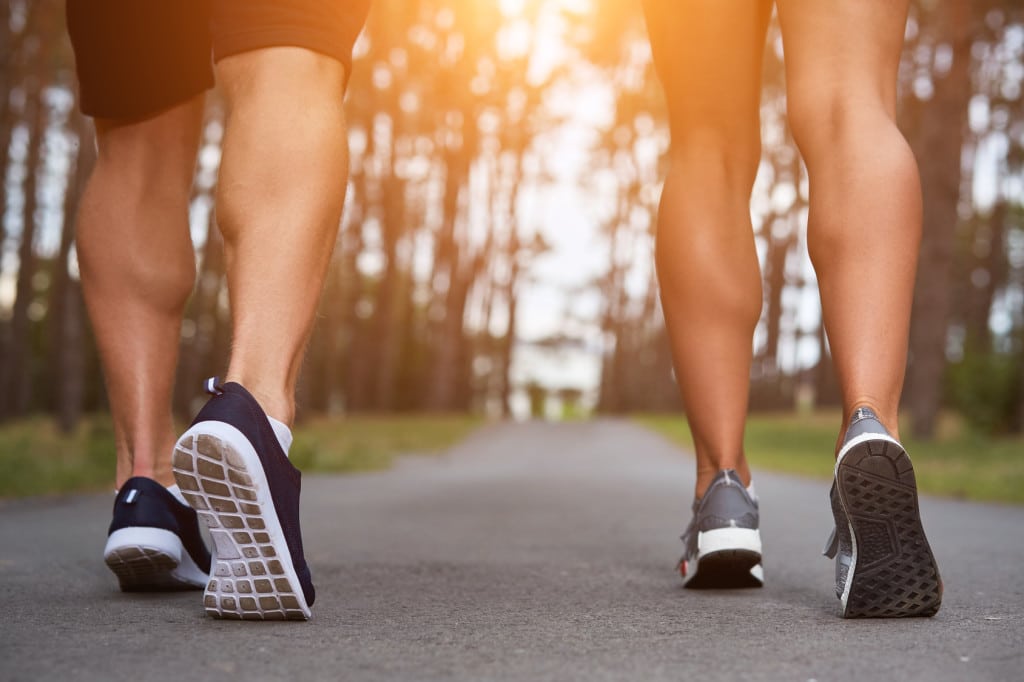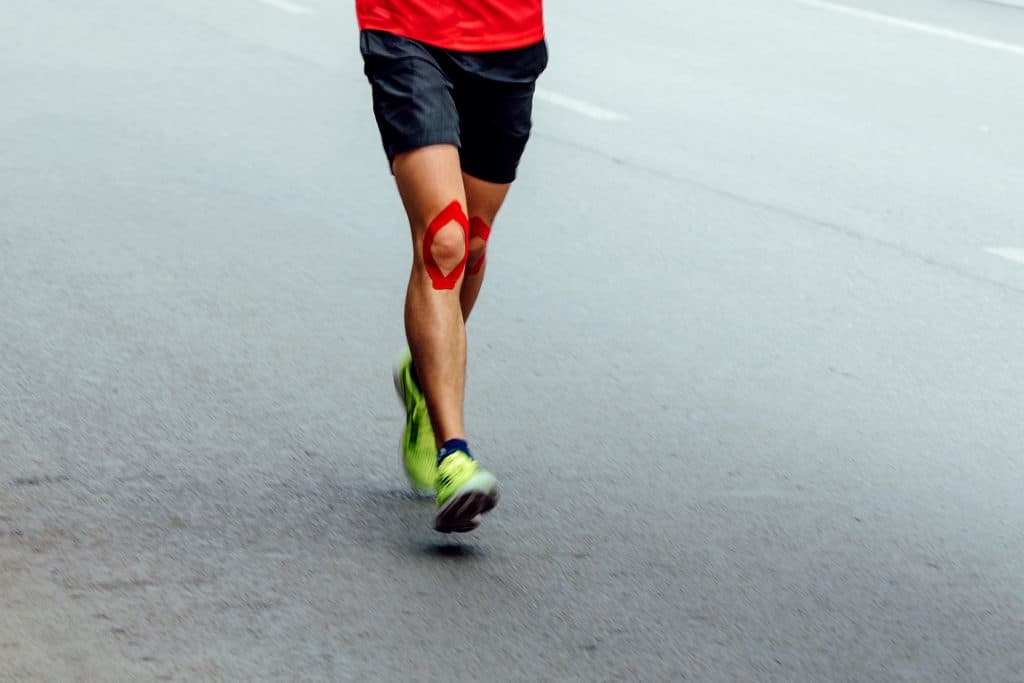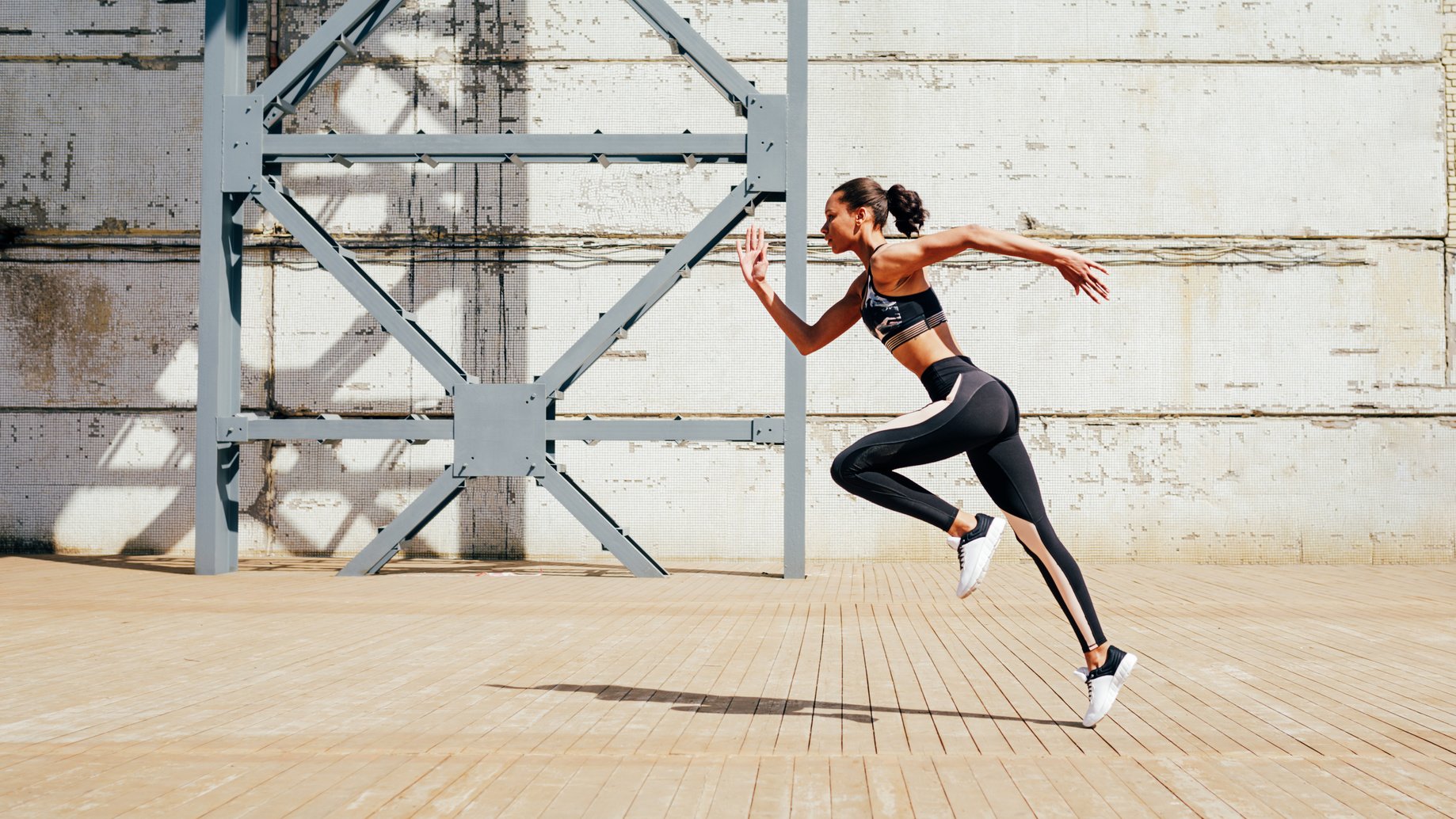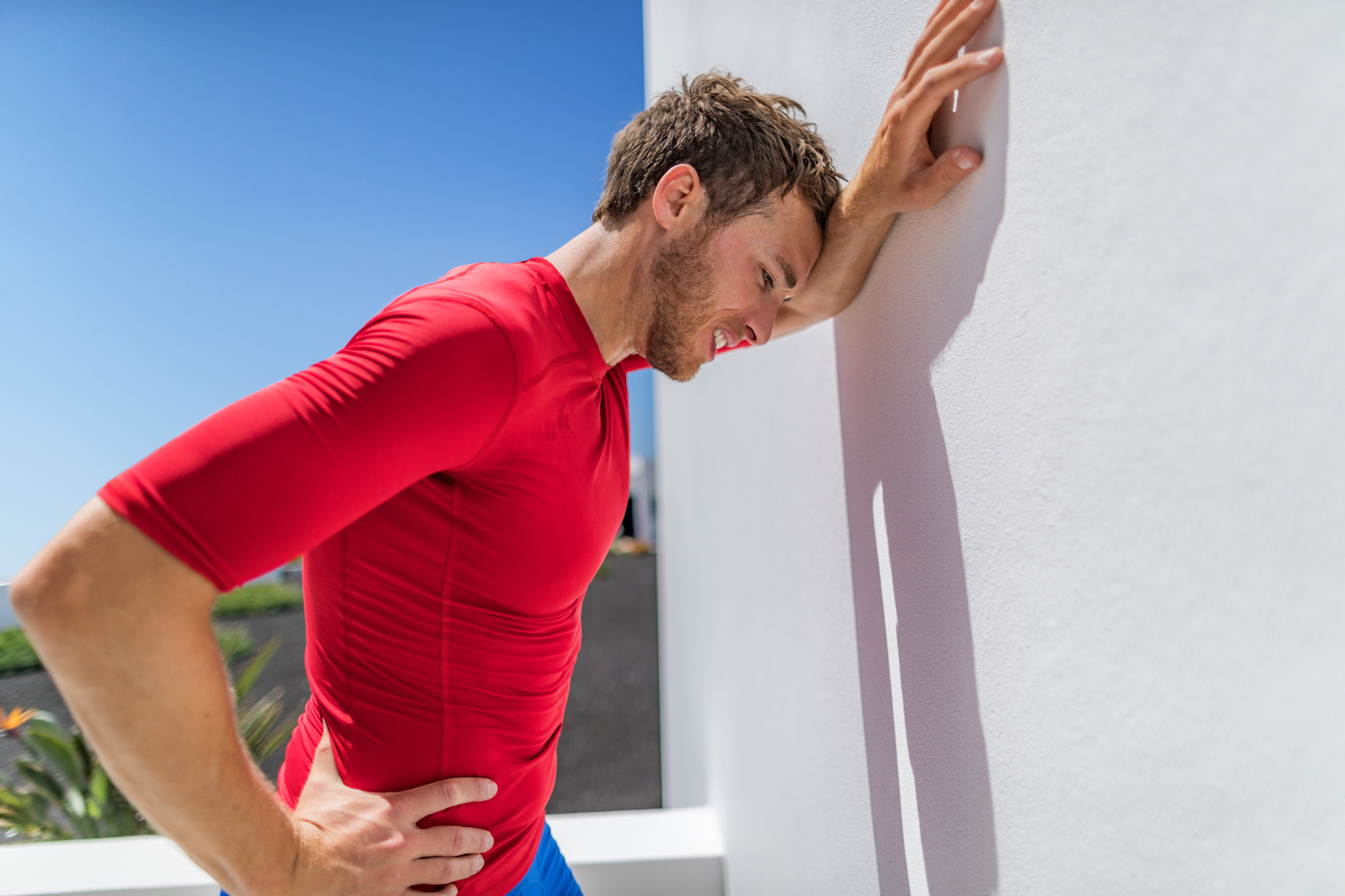Let’s talk about something that might sound all too familiar—back pain. Yep, it’s like that pesky friend who keeps showing up uninvited to the running party. But fear not, my friend, because you’re not alone! Back pain, especially in the lower back, is a common nemesis for many of us runners out there.
Believe it or not, research shows that more than 80 percent of U.S. adults have experienced some form of back pain in their lifetime.
It’s like a worldwide club with millions of members! And brace yourself for this jaw-dropper—$50 billion is spent each year in the U.S. alone to tackle this sneaky troublemaker called back pain.
But hey, I’ve got your back (pun intended)!
Today, I’m here to spill the beans on some of my best tips and guidelines for treating and preventing back pain while you hit the roads and trails.
So, are you ready to bid adieu to that nagging pain and get back to your running adventures? Well, fasten your shoelaces and let’s dive right in!
Disclaimer.
I’m not a medical doctor. Thus, my advice should not be considered as such. All I’m sharing is the result of my own experience and research on the topic. Hence, feel free to consult your doctor before you put into action any of the tips below. Or, at least do your own research. You’ve been warned; now let’s proceed.
Basic Back Anatomy
Alright, let’s get to know the rockstar of our body—the back! It’s like a bustling city filled with bones, discs, ligaments, and a whole lot of cool stuff working together to keep us standing tall and rocking our daily activities.
Imagine this: your back is like the superhero that ensures you can strut confidently, run freely, and do the everyday dance of life without a hitch. It’s not just about looking cool; it’s about protecting our precious lungs, heart, and other internal VIPs, which, by the way, are working hard behind the scenes to keep us kicking.
Now, don’t get me wrong, I could talk about the wonders of our back all day, but let’s save the superhero stories for another time.
Today, I’m diving into the nitty-gritty of back pain prevention and keeping our mighty back in tip-top shape!
So, let’s roll up our sleeves and explore the amazing world of back anatomy together. Are you ready for this spine-tingling adventure? Let’s go!
Enter Back Pain
Picture this: your back is a high-stakes game where muscles, ligaments, and disks play their roles like seasoned actors.
But sometimes, amidst all the action, a strain here, an irritation there, or a sprain somewhere else can throw the whole production into chaos! It’s like a symphony gone wrong, and your back is playing all the wrong notes.
Diagnosing back pain is like being a detective on a challenging case. There are so many possible culprits—strained muscles, irritated ligaments, sprained joints, and pesky disk ruptures—that it can feel like searching for a needle in a haystack.
But hey, don’t throw in the towel just yet! Armed with the right knowledge, we can start narrowing down the suspects and get to the root of the problem.
Causes of Back Pain While Running
Ah, the pesky culprits behind our back pain while running! It’s like a mystery novel with a twist at every turn.
Let’s uncover the leading causes, shall we?
If you are a newcomer to running
First up, we have our eager newcomers to the running world. They dive headfirst into intense workouts and push their limits like there’s no tomorrow. But guess what? That can leave their back feeling like it’s been through a rollercoaster ride. Ouch!
Wrong running intensity
Runners usually suffer from back pain after abruptly increasing their training load/mileage, especially while running on harder surfaces, such as a paved road, or a sidewalk.
If you’re Running with Bad Form
Now, let’s talk about running with bad form. It’s like dancing with two left feet, my friend. Imagine running in a forward hunch, head dangling like a pendulum, and shoulders all rounded up in a tight ball. Your back is screaming, “Hey, we’re not doing yoga here!”
You see, many recreational runners skip the running form 101 class. It’s like they missed the memo that proper posture matters!
And boy, does it matter. When your spine is out of whack, it’s a domino effect on your mid back, lower back, shoulders, neck—pretty much the whole shebang!
If you Sit too Much
Ah, the sedentary lifestyle, the silent enemy of our backs! We live in an era where sitting seems to be the national sport.
You’ve probably heard of the saying “sitting is the new smoking.” Well, guess what? It’s not just a catchy phrase; there’s truth behind it!
Our modern-day routines have “doomed” us to desk-bound lives. If you work at an office, chances are you’re spending a hefty 7 to 8 hours slouched in front of that screen, like a human question mark. And that’s not all! Surveys reveal that we average around 9 hours hunched over our screens daily. That’s like adopting the posture of a human banana for extended periods!
But here’s the catch: our bodies were never designed to withstand this prolonged sitting. Nope, we were meant to move, explore, and, yes, run like the wind! Our ancestors didn’t spend their days lounging on chairs; they were hunters and gatherers, constantly on the move.
If you’ve Weak Core muscles
Speaking of movement, let’s talk about those core muscles. They’re like the superheroes of your body, the mighty cranes that support your every move! But, alas, many of us have neglected these powerhouse muscles, leaving them weak and underdeveloped. It’s like relying on a rusty bicycle to carry a heavy load—ouch!
When your core muscles are weak, your back takes the brunt of the burden, and that can lead to those dreaded back pains. So, it’s time to give those core muscles some love and attention. Strengthen them up, and they’ll have your back—literally!
Too much Downhill Running
Ah, the joy of downhill running! It feels like you’re flying, right? But let’s talk about the impact it can have on our backs.
Those hill climbs can be a real back buster! You see, running downhill changes the game when it comes to biomechanics.
The postural adjustments needed to tackle those slopes can put a ton of stress on your back muscles. It’s like your back is playing a high-stakes balancing act, and if it’s not up to the challenge, ouch, here comes the pain!
And hold your horses if you’re flying down that hill without engaging your core muscles. It’s like going full speed without a seatbelt! Your core is there to stabilize you, but if you’re not giving it the attention it deserves, your lower back might end up paying the price.
A sore back after a downhill run? No thank you!
If You are Over 50
As we age, it’s no surprise that back pain becomes more common. It’s like an unwelcome guest that decides to stay for an extended vacation. Sometimes, that age-related back pain might have started knocking on your door even in your 30’s or 40’s! Talk about an early arrival!
If you are Overweight
And if you’re carrying a few extra pounds, your back might be feeling the strain. Those extra pounds can really throw your back out of whack. It’s like trying to carry a backpack filled with bricks all day long—no wonder it’s screaming in pain!
If you Have Foot Imbalances
Foot imbalances might seem like a minor issue, but believe me, they can cause some major trouble.
When your feet are not playing nice and distributing your weight evenly, it’s like a teeter-totter gone wild, and your back is caught in the middle of the chaos.
Those imbalances can throw off your whole body alignment and, eventually, translate to back pain. So, if your feet are feeling a bit rebellious, it’s time to show them some love and get them back in sync!
If you have Hernia Disc Issues
Herniated discs are like tiny troublemakers hiding within our spines. Picture those vertebrae as building blocks, perfectly stacked together. And guess what’s keeping them all cozy and cushioned?
Those intervertebral discs! But sometimes, one of those discs decides to go rogue, bulging or slipping out of place, causing acute pain.
It’s like a sneaky intruder crashing the party, and boy, does it bring the pain!
Degenerative Disease
Let’s not forget about degenerative diseases like sciatica. That sciatic nerve, it’s like the boss of all nerves, starting from the lower back and running all the way to the feet.
But sometimes, it gets cranky and inflamed, and boy, does it make its presence known! Sharp pain in the lower back, buttocks, thighs, and knees? Yep, that’s the calling card of sciatica.

Other Conditions to Blame
Oh, back pain, you sneaky trickster! It’s not just those usual suspects like foot imbalances and herniated discs causing all the commotion. No, no, it can be a whole circus of conditions playing their part in this grand show!
Ever heard of blood clots? Yep, those little troublemakers can cause some serious back discomfort, especially when they decide to take a detour from where they’re supposed to be.
Kidney infections and kidney stones, they might seem far away from the back, but trust me, they can bring the pain right to your doorstep! It’s like they’ve got a secret mission to make our lives more exciting, and our backs are caught in the crossfire.
Let’s not forget about Spondylolisthesis, Fibromyalgia, endometriosis, and Spinal stenosis. They’re like a mysterious league of pain, targeting our backs and keeping us on our toes.
Each with its own unique way of causing discomfort, they make sure we never have a dull moment. And arthritis and osteoporosis, they may be associated with getting wiser with age, but they also come with their fair share of backaches. It’s like they want to remind us that life is a wild ride, and our backs are holding on for dear life!
Identifying Back Pain For Runners – The Symptoms
Although there is no such thing as Runners Back overuse injury (to the best of my knowledge), it helps to know how to safely diagnose yourself and know when it’s time for a doctor’s visit.
You have runners back pain if you feel the following, either during or after your runs.
Upper Back Pain In Runners
Ah, the dreaded upper back pain – a pesky little reminder that our bodies aren’t always as invincible as we’d like to believe!
Picture this: you’re out on a run, feeling the wind in your hair and the thrill of the road beneath your feet. But suddenly, there it is – a sharp pain in your upper back, right between or under the shoulder blades. Ouch!
At first, it might seem like a minor annoyance, just a dull ache in the upper back or shoulders. You might try to ignore it, thinking it’ll magically disappear on its own.
But alas, it has other plans! Before you know it, that seemingly innocent ache has transformed into an intense, mind-numbing pain that takes center stage in your run.
It’s like your upper back has decided to put on a dramatic performance, stealing all the attention and leaving you feeling helpless.
You try to adjust your posture, hoping it’ll ease the pain, but it’s like a persistent little gremlin that refuses to be appeased.
Trouble Bending
Imagine this: you finish your run, feeling accomplished and ready to take on the world. But as you go to tie your shoelaces or reach for that water bottle, you notice something is off. Your once supple and flexible upper back feels like it’s turned into a rusty old hinge, creaking and protesting with every movement.
Bending or twisting at the waist becomes a mission impossible, and you find yourself contorting into awkward positions just to avoid that nagging discomfort. It’s like your upper back has decided to turn into a stubborn brick wall, resisting any attempt at bending or twisting gracefully.
And let’s not even talk about lifting heavy objects! The pain jumps into overdrive, as if to say, “Nope, not today!” It’s like having a tiny backache monster that wakes up at the mere thought of any back-twisting motion.
It’s frustrating, to say the least. But fear not, my resilient runners! There’s hope in this tale of limited mobility. With a little patience and some targeted stretches and exercises, we can coax that stiffness to loosen its grip.
Lower Pain In Runners
Again, imagine this. You’re out on a blissful run, feeling the wind in your hair and the pavement beneath your feet. But suddenly, there it is – that nagging sensation in your lower back, like a tiny pebble lodged in your shoe. It starts innocently enough, a subtle reminder of its presence.
As you continue your run, that pesky pain becomes bolder, rearing its head during the downhill section like a mischievous trickster. It’s almost as if your lower back is conspiring against you, waiting for the perfect moment to strike.
But here’s the kicker – lower back pain doesn’t always play by the rules. It can show up even when you’re not running, turning simple everyday tasks into a delicate dance of discomfort. Sitting at your desk, reaching for something on a high shelf, or even tying your shoes can suddenly become a challenge.
It’s like your lower back has a mind of its own, deciding to join in the daily activities when you least expect it. And just like that, your once joyful run turns into a quest to conquer this elusive pain.
But fear not, valiant runners! You’re not alone in this battle. With the right strategies, we can outsmart that cunning pain and reclaim our joy on the road.
Sore Spot
A sore spot is usually a tender area on your back that seems to protest with every touch. It’s like a secret code between your body and the universe, a signal that something is amiss.
You see, your back is like a finely tuned instrument, and when it’s not in harmony, it lets you know with that soreness. It’s like a gentle warning sign, urging you to pay attention and take action.
Big Word of Caution
Here comes the big word of caution – pain in the knee or tingling feelings in the legs? That’s a different story altogether! It’s like the sore spot’s distant cousin, coming to visit uninvited. And trust me, you don’t want that uninvited guest crashing the party.
If you find yourself experiencing pain in your knee or strange tingling sensations in your legs, it’s time to hit the pause button and seek expert advice. That’s when you call in the specialists, the heroes of the medical world, who can unravel the mysteries of these symptoms.
Remember, my fellow runner, self-care is essential, but there are times when you need the guidance of those who know the human body inside and out. They can be your allies in deciphering what’s causing those sensations, ensuring you get back on track swiftly.
Treating Back Pain In Runners
When it comes to tackling that pesky back pain, the comfort of your own home can be your haven of healing. Unless it’s a major medical emergency, you don’t need to be rushing to the hospital or booking a surgery ticket. No siree!
Allow me to introduce you to the R.I.C.E method – the superhero of self-care for runners like us. R.I.C.E stands for Rest, Ice, Compression, and Elevation, and it’s like having a personal first-aid kit at your disposal.
Rest
If you find yourself grappling with mild back pain during or after a run, remember this mantra: Rest, rest, and more rest! Taking two to three days or even more to let your body fully recover is the secret sauce to a speedy rebound.
Here’s another nugget of wisdom: give those hard surfaces and downhill trails a break during your recovery period. Opt for softer, flatter terrains to pamper your precious back. Think of it as a relaxing spa treatment for your spine – smooth and soothing!
Remember, my running comrades, pampering your back during the healing process is like giving it a well-deserved vacation. So, lay off those tough trails for a bit, and your back will thank you with every pain-free step you take.
Cold Therapy
Cold therapy is like a breath of fresh air for your achy back. So, picture this: you’ve got a frozen bag of peas or beans, wrapped up like a cozy winter scarf in a cloth or towel. Oh, the relief it brings!
Now, here’s the scoop – some scientists might not have a diploma in “Cold Therapy Magic,” but trust me, it works like a charm for most folks. While the scientific evidence might be playing catch-up, ice has some superpowers of its own. It’s like the superhero that swoops in to ease your pain, reduce swelling, and relax those pesky muscle spasms.
But, wait, before you go piling ice straight onto your skin, hold on a sec! Let’s play it safe, my friends. Always remember to wrap that icy wonder in a cloth or towel – think of it like a cozy blanket for your back. We want your back to feel the chill, not your skin!
Oh, and here’s a friendly reminder: while R.I.C.E works wonders for mild back pain, don’t forget that it’s not a magical fix for everything. If your back pain lingers or gets worse, don’t be a lone wolf – call in the experts! Seeking medical advice is like having a wise sage by your side, guiding you towards a lasting solution.
Seek Medical Attention
Now, I’m all for empowering you to take charge of your health, but there comes a time when you might need the big guns – and that’s where the medical squad comes in. If all these cool tricks don’t cut it, don’t hesitate to call in reinforcements and seek medical attention.
Here’s a secret tip: if you start feeling any leg or groin numbness, or if your strength decides to take a hike, or heaven forbid, you experience bladder or bowel issues – it’s time to sprint to the medical room, my friend. Don’t mess around when it comes to your health.
So, if your back pain decides to go all stubborn on you, take a deep breath, don your cape, and seek help from the professionals. They’ll run some tests, and together, we’ll crack this case like detectives solving a mystery.
Some of the tests your doctor might order include (but not limited to):
- Blood test
- X-rays
- Computed tomography, or CT.
- Magnetic resonance imaging
Preventing Back pain While Running
Ah, my favorite topic – preventing back pain while running! After all, why deal with the pain when we can take a proactive approach, right?
Here a few measures to consider.
Strength Train
First up, we’ve got the ultimate hero – Strength Training! I know, I know, you might think running is enough of a workout, but trust me, a little extra muscle love goes a long way. Think of it like suiting up in a super-strong armor that shields you from common injuries.
Those resistance exercises are like a secret weapon, targeting your rhomboid muscles, lower and mid trapezius, and shoulders – those vital postural muscles that keep you standing tall and proud!
Exercises For Upper Back Pain
For starters, I highly recommended resistance exercises that strengthen the rhomboid muscles, the lower and mid trapezius and the shoulders—vital postural muscle.
Therefore, if you’ve serious postural challenges and/or suffer from severe muscle imbalances, then work on increasing strength in your postural muscles—especially the lower portion of the trapezius muscles.
Some of the best exercises include pull-up, shoulder extension, and Superman.
Exercises for Side Back Pain
Now, if you’ve got some postural challenges or you’re battling muscle imbalances (we all have our kryptonite, right?), then let’s work on boosting the strength in your postural muscles, especially those lower trapezius muscles. They’re the real MVPs, trust me.
So, put on your cape and get ready to conquer those exercises – pull-ups, shoulder extensions, and the Superman move (no, not Clark Kent stuff, but it’s just as cool!). These exercises are like the sidekick that has your back (literally) during those tough runs.
But wait, there’s more! We’ve got a whole arsenal of strength exercises just waiting to be unleashed. Strengthen your core like the mighty warriors we are – think planks, bridges, and those weighted crunches that make your abs feel like they could bench press a car.
Exercises for Lower Back Pain
To strengthen the muscles on the lower back, do plenty of deadlifts (all variations), along with kettlebell swings, bridges, and the sort.
Also, strength your core.
As I have already stated, weakness in the core is a leading cause of back pain.
Some of the best core exercises include the plank, the bridge, the windshield, Russian twists, weighted crunches, and T-pushups.
Stretching and Foam Rolling
Ah, let’s talk about the wonderful world of stretching! It’s like giving your muscles a delightful, rejuvenating stretch that leaves them feeling all loose and limber – just what we need for those epic runs!
Now, picture this – you’ve got some lower body mobility issues or your hamstrings are as tight as a clenched fist. Well, fear not, my fellow runners, because stretching is here to save the day! Tight hamstrings can be a real pain in the back (literally), as they can exacerbate that pesky lower back pain we’re trying to avoid.
You see, those hamstrings are like the trusty support beams that hold up the grand architecture of your body during every walking and running movement. But when they’re too tight, it’s like putting too much pressure on your back – not a great combo!
But fear not, there’s a hero in the form of stretching! By stretching those vital hamstrings, you’re giving them the much-needed love and care they deserve. It’s like giving your muscles a relaxing spa day – they’ll thank you with every pain-free step you take!
So, let’s limber up, shall we? Incorporate some awesome hamstring stretches into your routine, like reaching for those toes with a gentle touch, or doing some dynamic hamstring stretches like leg swings. It’s like giving your hamstrings a dance party they won’t forget!
And guess what? Not only will your hamstrings feel like they’re walking on clouds, but you’ll also be reducing the strain on your pelvis, helping to soothe that low back pain that can sometimes tag along on our runs.
Run with Good Form
Ah, the magical power of good form – the key to unlocking a world of pain-free running bliss! Believe me when I say, it’s like having a secret weapon in your running arsenal!
Listen up, fellow runners, because this is where the magic happens. Good form is like having a guardian angel watching over your back – literally! From my own experience, I can vouch that nailing that perfect form can work wonders in preventing back pain – no critical conditions required!
Picture this – you’re out on a run, gliding like a gazelle, and your form is on point – back straight, core engaged, and posture on fleek! Not only will you feel like an unstoppable force of nature, but you’ll also bid adieu to those nagging back pains that used to slow you down.
It’s all about being a form detective – keep a keen eye on yourself while running. Straighten that back like you’re showing off for the runway, engage that powerhouse core of yours, and keep that upper body as steady as a rock throughout your run. Trust me, your body will thank you!
Oh, and here’s a little tip – avoid excessive twisting at your waist like you’re a human pretzel. You’re not, and your back will appreciate you for it! Stay stable, my friends, and let that upper body ride the smooth, steady wave of your run.
Sit With Proper Posture
If you’re spending more time glued to that computer screen than you’d like to admit, it’s time to give your sitting posture a much-needed makeover!
Picture this – you’re sitting like a posture pro, exuding confidence and comfort. Say goodbye to those dreaded backaches and hello to a whole new level of productivity and focus! Let me spill the beans on how to nail that perfect sitting posture.
First things first – get yourself a lumbar support. Trust me, it’s a game-changer! Grab the Original McKenzie Slimline for that extra boost, or simply use a small cushion to show your back some love. Your spine will thank you!
Now, let’s tackle that computer setup. Keep that monitor right at eye level, and your forearms horizontal with elbows comfortably bent at right angles. No more slouching like a couch potato! Keep those hips and knees level, feet planted firmly on the ground. Need a little extra boost? A footstool’s got your back!
But here’s the thing – sitting for hours on end isn’t doing you any favors. Time to shake things up! Take regular walk breaks, at least once every hour. Let those legs stretch and get that blood flowing. And don’t forget to switch it up – shift your position every 10 to 15 minutes, keeping those muscles happy and loose.
Now, let’s jazz up that office space with an epic makeover! Say hello to the stand-up work desk – a fantastic way to break free from the shackles of sitting. Give it a whirl for a few weeks, and you’ll feel like a brand new you!
And for some extra spice, throw in some dynamic exercises! Roll those necks, shrug those shoulders, and get those muscles moving. Your body will thank you for the mini workout session!















